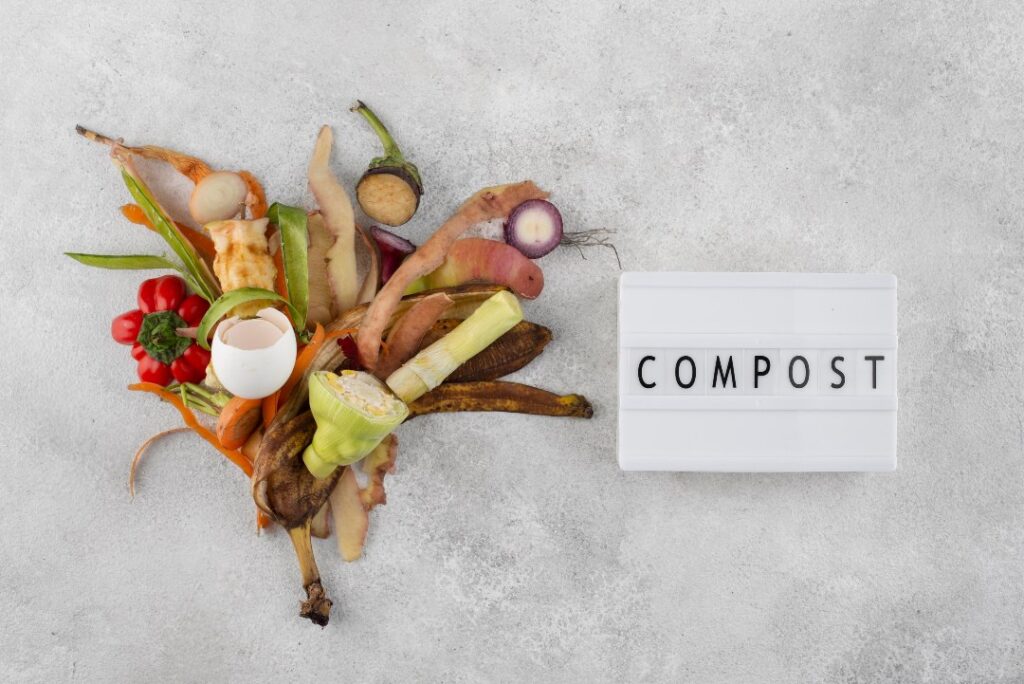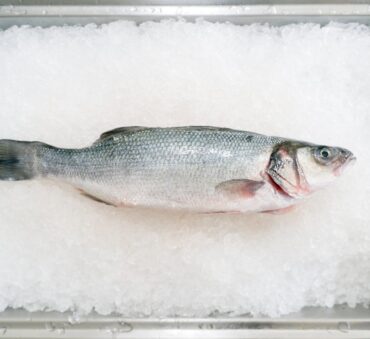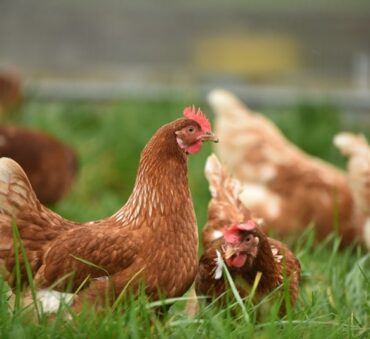Food is the single largest category of material placed in municipal landfills, leading to an increase in methane emissions, a loss of resources, and wasted nourishment that could go to the 44 million people in the United States who face food insecurity.
While there are strategies to reduce food waste in the U.S., there needs to be an equal effort to bring awareness to effective food waste recycling methods. The first step is understanding the importance of recycling, knowing how to recycle food waste, and implementing these strategies in different industries.
This comprehensive guide explores these strategies in more depth, exploring the benefits and best practices of food waste recycling.
Key Takeaways
- Food waste recycling offers a range of benefits to both the environment and businesses, including tax breaks, cost savings, reduction in methane emissions, and resource conservation, among others.
- A food waste audit is the first step for businesses to start recycling; it works to identify types and quantities of food waste in order to plan proper food waste recycling methods.
- Businesses must choose the right on-site equipment to help in their recycling efforts, which may include anaerobic digesters, composting bins, data analytics and control, or waste collection bins.
- There are multiple ways to implement food waste recycling at home, such as composting, kitchen-top digesters, Bokashi Bins, or checking local recycling incentives for assistance.
- Innovative food waste technology has been crucial in improving food waste recycling efforts, allowing businesses to comply with new regulations around the United States
Understanding Food Waste Recycling
While the goal is to reduce food waste, it’s impossible to eliminate it all together. That’s why food waste and recycling go hand in hand, acting as a sustainable outlet that’s beneficial to the environment. As we’ll see, there are many ways to implement food waste recycling solutions, but every company must consider the best approach for their business.
What is Food Waste Recycling?
Food waste recycling is the process of converting organic food waste into useful materials and products, such as animal feed, compost, and natural fertilizers. The goal of food waste recycling is to divert organic material away from landfills, resulting in a more sustainable and environmentally friendly solution. There are many ways to implement organic food waste recycling in businesses and homes, with composting, anaerobic digestion, and the use of innovative technology being a few of the popular strategies.
Benefits of Food Waste Recycling?
Food waste recycling offers benefits for the environment as well as business operations. Here are some of the advantages of reducing food waste in landfills:
- Tax breaks: As part of the United States’ goal to reduce food waste, some states have implemented tax incentives for businesses to adopt food waste recycling methods.
- Cost savings: By diverting food waste from landfills, businesses can reduce disposal fees and save on waste collection and transportation costs. Having a new awareness of the crisis can also provoke businesses to manage their food inventory more efficiently, leading to cost reductions.
- Maintaining legal compliance: Similar to incentives, many cities and states have implemented their own food waste laws to reduce food waste and food insecurity. Following these requirements guarantees that businesses are in accordance with regulations.
- Saves landfill space: This reduces the need for additional landfill space, preventing soil contamination and decreasing water pollution.
- Generates renewable energy: Through strategies like anaerobic digestion, food waste is converted into renewable energy, otherwise known as biogas.
- Improves a business’ reputation: As awareness of the food waste crisis grows, businesses that implement food waste recycling processes can gain recognition from their community and clients.
- Mitigates methane emissions: When food waste decomposes in landfills, it produces methane, a powerful greenhouse gas that contributes to global warming. Recycling food waste helps reduce methane emissions, acting as a huge benefit for the environment.
- Resource conservation: When food is wasted, the resources used to produce it are also wasted; this includes water, energy, labor, and land. By recycling waste, these resources are converted into something that can help the environment, such as renewable gas or compost.
Food Waste Recycling Process in Business
There’s a large amount of food waste generated along the supply chain, with 2% of food waste being produced by manufacturers, 16% by farms, and 40% by restaurants, grocery stores, and food service companies.
These statistics show the need to create innovative strategies to address the crisis, but many businesses have the same question: what’s the best way to recycle food waste?
Each company must create a strategy that works for them, which can be done by conducting a food waste audit, choosing the right equipment, and monitoring their progress regularly.
Conducting a Food Waste Audit and Creating a Recycling Plan
Businesses can’t manage food waste until they know exactly where it’s coming from. A food waste audit helps businesses identify waste sources and quantities so they can successfully implement waste management food recycling in their daily operations.
An important part of this audit is setting goals and objectives. How much waste can be mitigated? How do we align this with business operations? How do we achieve compliance with environmental standards? Who should be involved?
Once a business has clear objectives, they can create waste management strategies that align with their goals. To start, they should deeply analyze where the waste is coming from and what type of waste it is (spoilage, overproduction, etc.). After looking at where the waste is coming from, they should be able to see patterns in waste generation, which can help them find areas for improvement.
The next step is to create an action plan and monitor its success. The approach to business food waste recycling may vary depending on the industry and type of waste being generated, but it should have one common goal in mind: finding sustainable methods to recycle food waste.
Choosing the Right Equipment and Systems for Food Waste Recycling
Having proper food waste recycling equipment is key to implementing company-wide recycling methods. Here are some of the available options:
- Composting bins: Composting bins are great for smaller-scale recycling, as they can be done on-site. These bins turn organic waste into compost, which recycles nutrients, builds healthier soil, and reduces greenhouse gas emissions.
- Anaerobic digesters: Great for high-volume waste generators, anaerobic digesters use bacteria to break down organic matter in the absence of oxygen. This process diverts organic waste from landfills, turning organic waste it into biogas.
- Monitoring technology: These platforms help companies analyze their food waste generation, helping them to track and optimize recycling efforts. This data can also help ensure compliance with regulations.
- Waste collection bins: All businesses should have a designated bin to collect food waste. This is a practical solution for many companies that don’t have other on-site equipment, such as the composting bin mentioned above. After collecting sufficient waste, their local waste management company will transport, treat, and recycle it.

There are many ways to recycle food waste, but businesses typically opt for the above options. Other options that require more technology, such as converting food waste to animal feed, are often done at waste management locations. This makes waste collection bins a great option for companies that don’t have the space or labor to do it. For the best outcome, businesses should partner with a waste management company to meet their business’ recycling goals.
Monitoring and Adjusting the Recycling Program
There may be some trial and error as companies start implementing new food waste recycling methods, but monitoring this progress regularly is key to making adjustments early on. This will improve the short- and long-term outcomes of your efforts.
If you see that your recycling program is not meeting its objectives, there are different areas you should check. Was your staff trained to reduce waste? Is everyone implementing it into their daily routines? Are you producing more waste than forecasted, causing your waste collection bins to fill up too fast?
Monitoring technology, as mentioned above, is a great way to keep track of your efforts and identify which areas can be improved. Monitoring systems provide real-time access to waste data, monitor the functionality of your on-site equipment, maximize pickups with waste management companies, and improve diversion rates.
Industry-Specific Approaches to Food Waste Recycling
Every industry faces its own unique challenges and opportunities in regards to food waste recycling. Keep reading to better understand efficient food waste recycling methods in the hospitality, agricultural, and commercial sectors.
Food Waste Recycling in Hospitality
Food waste in hospitality is a huge concern, with the main contributors being over-preparation, mismanagement of inventory, and portion sizes. There are different areas that make up hospitality, with hotels, tourism, and restaurant food waste all contributing to the issue.
So how to recycle food waste in the hospitality sector?
Since the hospitality industry generates a lot of food waste, there are multiple ways to address it. The first would be through composting. Many organic items found in hospitality can be composted, including coffee grounds, fruit and vegetable peels, and leftover food.
That said, many restaurants and hotels don’t have the capacity to keep up with the amount of waste being generated, making on-site recycling harder to manage. This causes many of them to opt for waste collection bins that can be collected and treated by local waste management companies.
Food Waste Recycling in the Industrial & Agriculture Sectors
In the industrial and agriculture sectors, there are multiple options to address the large-scale waste being produced.
One of the options that offers numerous benefits is the process of converting food waste to energy, which involves treating organic waste and transforming it into usable forms of energy. A great example of this is the anaerobic digesters of food waste, as discussed above. The advantage of these types of processes is that they not only divert waste from landfills but also provide a renewable energy source, making them an environmentally friendly option. Recycling food waste to fertilizer would be another great way for businesses in this industry to use their waste in an efficient way.
Another process that would be beneficial in this sector is converting food waste to animal feed. This option promotes resource conservation, acts as a cost-effective alternative to conventional feed, and opens up new avenues of revenue. This process requires technical knowledge, infrastructure, and equipment and must follow laws and regulations to ensure the quality of the feed.
Food Waste Recycling in the Commercial Sector
Food waste in the supply chain is produced in large numbers, with the commercial sector being a huge contributor. There are many causes, including overstocking, spoilage, problems with supply chain coordination, and even food waste due to expiration dates. By reducing waste in this area, businesses have the opportunity to set a good example for other sectors while working to change buyer behavior regarding food.
While donations may not technically be considered recycling, it’s a great way for businesses in this sector to reduce the amount of waste going to landfills. Thanks to the passing of the Bill Emerson Good Samaritan Food Donation Act, businesses are encouraged to donate food without being held liable if it causes harm to recipients. This keeps food out of landfills while also addressing food insecurity.
An important aspect of commercial food waste recycling is for businesses to undergo regular waste audits to identify where they can improve their recycling efforts. That said, composting, anerobic digestion, and having waste bin collections are all great efforts. With such large quantities of waste being generated in the commercial sector, it’s important that businesses train their staff and establish clear recycling guidelines.
The use of food waste technology to track progress is increasingly being employed in this industry due to new food waste laws and tax incentives.
Implementing Food Waste Recycling at Home
The EPA estimates that in 2019, about 96 percent of households’ wasted food ended up in landfills, combustion facilities, or down the drain to the sewer system. With such a high percentage of food being thrown away in houses around the United States, there’s a dire need to implement food waste recycling at home.
Understanding Home Food Waste Dynamics
Understanding how food waste is generated is the first step to improving household recycling. Common sources of waste in the household include bulk purchases, food left on plates, inadequate storage, and misunderstandings of expiration dates. It’s important to note that food waste encompasses all organic waste, which includes the trimmings of food when you prep for a meal.
Rather than throwing these trimmings and other sources of waste in the trash, families can implement food waste recycling processes in their own homes.
Setting Up a Food Waste Recycling System at Home
The key to setting up a food waste recycling system at home is finding a sustainable approach that works for your family. No matter which approach you take, the first step should be to have a dedicated bin for food waste. Make sure to avoid pet waste, diseased plants, meat and dairy (depending on the approach you take), and non-compostable materials like plastic.
To avoid strong odors, opt for airtight containers, layer and cover composting, and avoid strong-smelling foods. If you have outdoor space or want to take an innovative indoor approach, composting is a great option for many families (we’ll discuss this in more detail below).
Since some recycling methods are harder to do on-site, many families decide on local waste management solutions. Some cities implement strategies to encourage residents to recycle, such as San Diego’s initiative to provide free kitchen pails and green bins, as well as weekly organic waste collection. We encourage you to check your local recycling programs, community gardens, and nonprofit organizations. If these types of food waste recycling programs are not available in your city, there are many organizations that can assist you.
And lastly, a great effort in homes is the implementation of food waste upcycling, the process of transforming food waste and ingredients that would otherwise be discarded into new products. There are many ways that households can implement this approach into their everyday lives, such as turning old bread into croutons or using an overly ripe fruit to make a smoothie.
Turning Food Waste into Fertilizer by Composting
Composting organic food waste has been repeatedly mentioned in this article due to its numerous benefits, so let’s review how this can be done at home. After collecting your food waste, here’s what you should do:
- Choose a place to make your compost: This will likely be your backyard, though some communities have a community garden or share a compost pile between neighbors. If space is limited, there are indoor composting alternatives, which we’ll discuss below.
- Make the compost mix: A compost mix is a mixture of green (food waste) and brown (dried leaves, pine needles, shredded paper). This mixture helps balance nutrients, retain moisture, and improve aeration.
- Layer the mix: Layer the mixture in the designated compost bin or area, with each layer no larger than an inch or two. There are different ratios that people use, but a good rule of thumb is to do 2 parts brown material for every 1 part green by volume.
- Turn and aerate: Regularly turn and mix the compost pile to introduce oxygen to speed up decomposition.
- Check moisture: Maintaining the right moisture is the key to successful composting. If compost is too wet, it may look slimy and release bad odors; if it’s too dry, it will probably have limited evidence of organic material breakdown. A good guideline is that your compost should have the consistency and moisture content of a wrung-out sponge when you squeeze it. If it’s too dry, add water to the top.
- Harvest finished compost: When your compost has a dark, crumbly texture, it’s ready to be used. Many also say that a good sign that it’s done decomposing is its smell, which should be woody and earthy.
Innovative Food Waste Recycling Solutions at Home
There are also innovative food waste recycling ideas that individuals who have limited space can explore, including:
Bokashi Bins
This is a Japanese technique that ferments food waste. The biggest difference between traditional composting and bokoshi is that any food waste, including dairy and meat, can be composted; this process also requires that you isolate waste from oxygen as much as possible. To do this, gather waste and add it to the designated bokashi bin.
Every time you add waste, sprinkle it with a layer of bokashi bran (compost accelerator) and press down firmly. This process will produce excess liquid, which should be drained every other day. After about two weeks, you can bury the fermented mixture in a bare spot in your yard to let it finish decomposing. After a couple of weeks, it should be ready to be used as soil.
Worm Farms
Worm composting, or vermicomposting, is the process of using worms to recycle organic matter. To do this, create a bedding of paper or dried leaves, soak it for ten minutes, and then wring it out. Place it in a bin with a handful of soil, and then add at least a pound of worms (red wigglers are the recommended type). Feed your worms scraps, and after about 3 to 6 months, you can harvest the finished compost.
Kitchen-Top Digesters
Food waste digesters are small machines that can be stored in the kitchen for an aerobic or anerobic digestive process. In both processes, microorganisms eat the organic material and convert it into another form. This method is considered an easy way to manage kitchen scraps in a sustainable way, making it a great option for people with limited space.

Technologies and Innovations in Food Waste Recycling
Advances in food waste technology are making a huge impact on this crisis by offering innovative solutions to both households and large corporations. Food waste recycling technology helps manage things like collection, treatment and recycling, and prevention—all important factors in the fight against food waste. This can be seen in multiple ways.
Food waste treatment technology is an area of technology that transforms organic waste into other resources. An example of this is food waste liquefiers, a process that turns waste into water. Not only does this reduce waste in landfills, but it also creates a valuable resource, making it a great option for large commercial establishments.
There are also many food waste management technologies to help streamline the collection and treatment of food waste. Garbage truck advances are a great example of this. This system works by predicting fill levels, making collection trips more accurate and cost-efficient.
Overall, there are many innovations that wouldn’t be possible without new food waste technology, including anaerobic digestion, in-vessel composting, and additional technology that turns food waste into valuable resources.
These new solutions have been crucial in improving organic food waste recycling efforts, allowing businesses to comply with new regulations around the United States.
Food Waste Recycling Legal and Regulatory Framework
Food waste regulations aim to both prevent and manage food waste in a sustainable way. Understanding these regulations is crucial for businesses, as they need to ensure they comply with new state- and nation-wide laws. This is especially important for companies that conduct business across multiple states, as food waste laws in the U.S. vary by state.
To implement business-wide changes, companies should offer their employees proper waste management training. This not only raises awareness but also ensures that certain processes are followed at every stage of their operations.
One of the ways to stay up to date with food waste regulations is to partner with a food waste management company. These companies specialize in finding innovative solutions that comply with the law and are beneficial to your specific industry.
Conclusion
There are numerous benefits of food waste recycling, both for the environment and businesses. The key to reducing the amount of food waste in landfills is finding an approach that works for you and your business.
One of the ways to achieve your waste management goals is to partner with Shapiro. Shapiro helps businesses manage a variety of waste management needs, including waste logistics, waste tracking workflows, and other innovative solutions to manage food waste in everyday business operations.
Contact us today to explore our technology-driven food waste management solutions.
Baily Ramsey, an accomplished marketing specialist, brings a unique blend of anthropological insight and marketing finesse to the digital landscape. Specializing in educational content creation, she creates content for various industries, with a particular interest in environmental initiatives.



